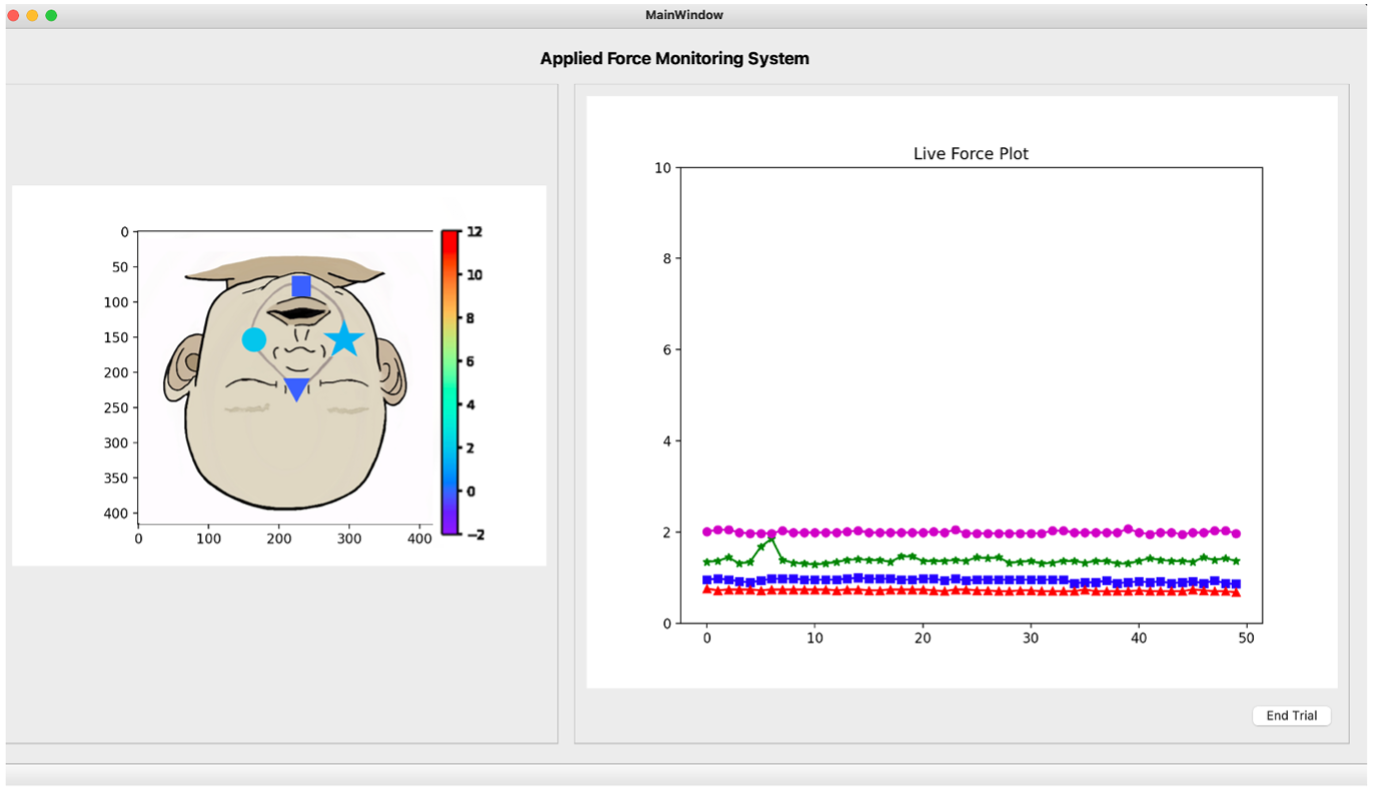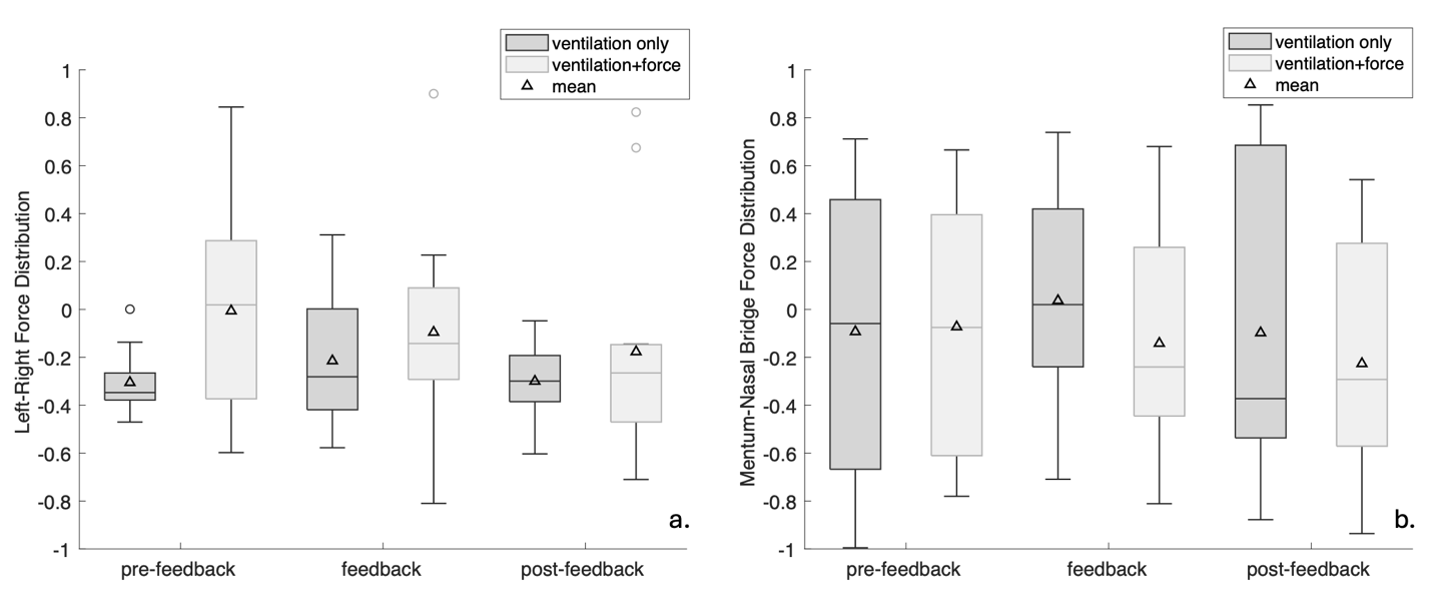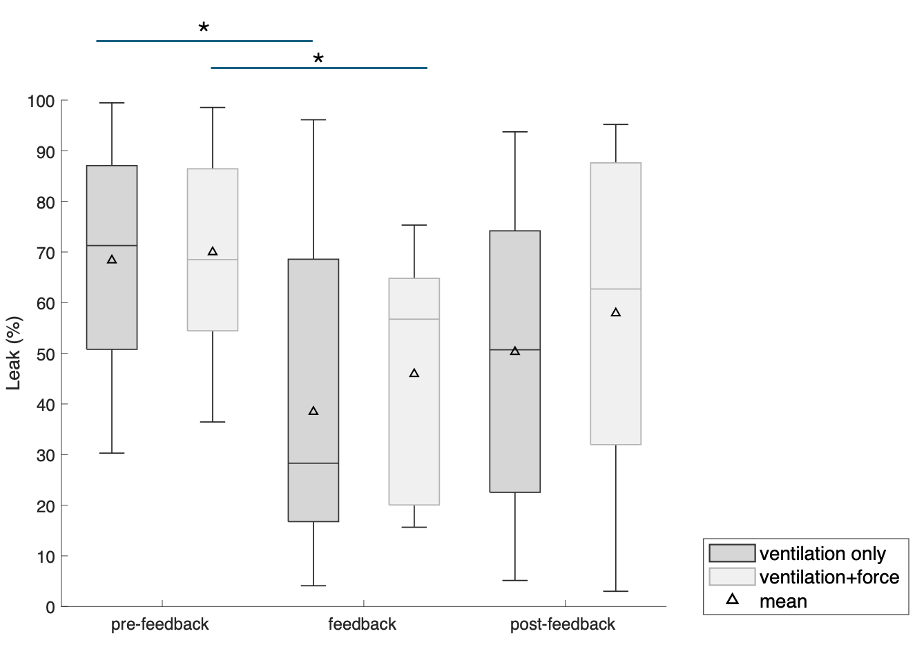Neonatal/Infant Resuscitation 1
Session: Neonatal/Infant Resuscitation 1
287 - Real-Time Force and Ventilation Feedback During Positive Pressure Ventilation Training
Friday, April 25, 2025
5:30pm - 7:45pm HST
Publication Number: 287.6091
Jacqueline Hannan, University of Michigan, Ann Arbor, MI, United States; Gary M. Weiner, C.S. Mott Children's Hospital, Ann Arbor, MI, United States; Leia Stirling, University of Michigan, Ann Arbor, MI, United States

Jacqueline Hannan, PhD (she/her/hers)
Human Factors Researcher
University of Michigan
Ann Arbor, Michigan, United States
Presenting Author(s)
Background: Neonatal positive pressure ventilation (PPV) with a face mask requires an applied force to seal the mask against the face. Inadequate force placement leads to leak and ineffective ventilation, while excess force may cause injury. During PPV training, real-time feedback is sometimes taught with a respiratory function monitor (RFM). Novices learning to administer PPV do not receive any feedback about the amount of force they apply on the mask. Providing real-time force feedback during training may support learning proper PPV techniques.
Objective: Measure the effect of real-time applied force and ventilation feedback on mask leak and force distribution.
Design/Methods: Medical and nursing students performed simulated PPV on a SimNewB™ full-term manikin with a NeoPuff™ T-piece resuscitator and an anatomic inflated-rim mask (Ambu) for two minutes in 3 sequential trials. No feedback was presented in the 1st and 3rd trials, and participants were randomly assigned in the 2nd trial to receive either RFM (Monivent) feedback only, or both force and RFM feedback. Forces (Newtons) applied at the mentum, nasal bridge, and left and right zygomatic arch were continuously measured using ultrathin force sensors (SingleTact) and presented during force feedback trials via a custom interface (Fig.1). Left-right and chin-nose force distribution were normalized to represent force difference as a ratio of total force applied. Data were analyzed across each trial and between the two feedback groups, and 3 repeated measures ANOVA were fit (leak, left-right force distribution, nose-chin force distribution) to assess effects of feedback.
Results: This study enrolled 30 participants, with 15 assigned to each feedback group (RFM only or applied force and RFM). There was no difference in the left-right (F(1,49)=2.78, p=0.11) or chin-nose (F(1,49)=0.49, p=0.49) force distribution between feedback types (Fig.2). However, the large force distribution ratios in the chin-nose direction indicates that leak could occur due to poor seal at these locations, as a ratio near 1 or -1 indicates near-zero force at a sensor location. Mask leak was reduced in both the RFM feedback group (mean diff: 35.05%, CI: [10.43, 49.41], p=0.01) and the force and RFM feedback group (mean diff: 18.36%, CI: [7.89, 40.22], p=0.007) between the pre-feedback trial and the feedback trial (Fig.3).
Conclusion(s): In this study, mask leak was reduced when providing real-time feedback to novices learning PPV. Force distribution applied to the mask did not vary by the type of feedback provided. Future studies will test progress with longer training periods.
Figure 1.
 Custom interface designed to present live force feedback; left side: face-mapping diagram, right side: time series plot.
Custom interface designed to present live force feedback; left side: face-mapping diagram, right side: time series plot. Figure 2.
 Force distribution on the face sensors for each trial, grouped by feedback condition. Values are represented as a ratio of the force difference to the total force applied in the respective directions. 2a. Average left-right force distribution for each trial. Positive values indicate greater left force; negative values indicate greater right force. 2b. Average chin-nose force distribution for each trial. Positive values indicate greater chin force; negative values indicate greater nose force.
Force distribution on the face sensors for each trial, grouped by feedback condition. Values are represented as a ratio of the force difference to the total force applied in the respective directions. 2a. Average left-right force distribution for each trial. Positive values indicate greater left force; negative values indicate greater right force. 2b. Average chin-nose force distribution for each trial. Positive values indicate greater chin force; negative values indicate greater nose force. Figure 3.
 Percent mask leak for each trial, grouped by feedback condition. Asterisk indicates significance between groups.
Percent mask leak for each trial, grouped by feedback condition. Asterisk indicates significance between groups. Figure 1.
 Custom interface designed to present live force feedback; left side: face-mapping diagram, right side: time series plot.
Custom interface designed to present live force feedback; left side: face-mapping diagram, right side: time series plot. Figure 2.
 Force distribution on the face sensors for each trial, grouped by feedback condition. Values are represented as a ratio of the force difference to the total force applied in the respective directions. 2a. Average left-right force distribution for each trial. Positive values indicate greater left force; negative values indicate greater right force. 2b. Average chin-nose force distribution for each trial. Positive values indicate greater chin force; negative values indicate greater nose force.
Force distribution on the face sensors for each trial, grouped by feedback condition. Values are represented as a ratio of the force difference to the total force applied in the respective directions. 2a. Average left-right force distribution for each trial. Positive values indicate greater left force; negative values indicate greater right force. 2b. Average chin-nose force distribution for each trial. Positive values indicate greater chin force; negative values indicate greater nose force. Figure 3.
 Percent mask leak for each trial, grouped by feedback condition. Asterisk indicates significance between groups.
Percent mask leak for each trial, grouped by feedback condition. Asterisk indicates significance between groups. 
